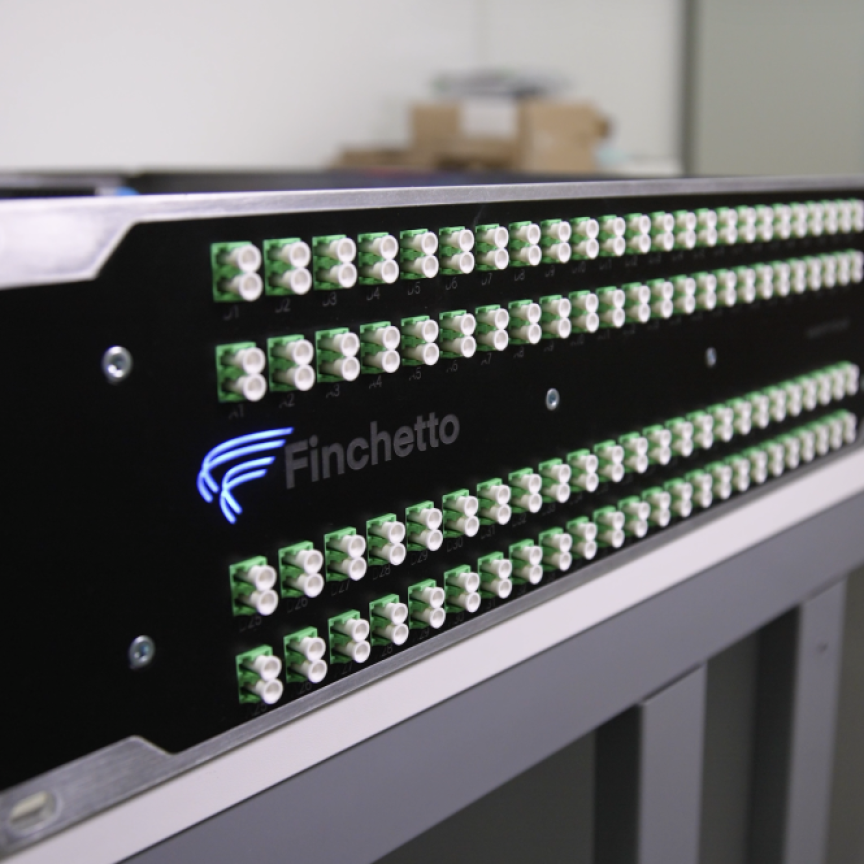As the world struggles to settle into the ‘new normal’, today’s optical networks need to be flexible in their architecture blueprint, while adapting to new technologies to provide the kinds of new capacity and service options to meet accelerated demand for higher bandwidth.
Speaking at the virtual NGON DCI event, as part of a panel discussion on the topic, Timothy Munks, senior principal analyst at Omdia said: ‘2020 was a very challenging year for optical networks. We’ve had the “work, learn, play” at home and what we are seeing is sustained bandwidth use throughout the whole day at former peak levels. For example, the average subscriber in North American cable TV networks between 9am and 5pm is about 6.3G, and that’s up some 41 per cent.’
Despite this, Munks said that in general the networks have performed ‘amazingly well,’ with limited supply line disruptions between March and May. ‘For the most part,’ said Munks, ‘these were overcome and we’re not seeing supply line disruptions anymore.’
Even without the pandemic-factor, however, the market continues to be driven by the need to increase capacity and lower the cost-per transported bit. Much of the work to do this focuses on adding L-band and increasing C-band. ‘The thing you want to do most,’ said Munks, ’is get as much out of the fibre bandwidth as you can, so expanding the C band and L band is a way to do this before you have to start deploying more fibre.’
That, of course, requires the development of a host of technology ecosystems to support the enhanced spectrum range.
Constant improvement
Also on the panel discussion was Geoff Bennett, Infinera’s director for solutions and technology. He discussed how some of the next, or ‘fifth’, generation coherent optics play their role: ‘Every generation of coherent offers better performance at lower data rates than the previous generation at that data rate,’ he said. ‘So, they’re allowing us to go to even higher data rates at very useable distances. The higher data rate per wave, the less cost per bit. This is useful for everyone from internet service providers, content providers, and so on. Classic customers that require the ability to drive down cost per bit. It’s really quite amazing, the performance that can be achieved with fifth generation technology. It’s really difficult to point to one piece of coherent innovation and say “that’s the thing”.’
Acacia’s marketing vice president Tom Williams agreed that network operators are under pressure to build and deploy multigenerational architectures comprising terminal equipment and optical line-systems to support both current and future data rates in an efficient, scalable and cost-effective way. ‘Traditionally,’ he said, ‘coherent optical transmission was primarily used for longer reach applications, but traffic patterns are changing in ways that are leading to the need for highcapacity interconnects that target shorter reaches in a power-efficient, cost-effective manner.’
This next-generation optical technology, he feels, has additional benefits to operators, because it can be used in a more bespoke way. ‘We’re taking the pluggable solutions and making them a little bit more tailored to the application,’ he said. ‘As pluggable coherent expands, it’s no longer a “one-size-fits-all” approach, we’re tailoring solutions for the individual applications.’
Indeed, both organisations have introduced their own solutions. Infinera’s ICE6, with features such as Nyquist subcarriers, probabilistic constellation shaping (PCS), and a high modem signal-to-noise ratio (SNR) featured in a number of successful trials last year. Likewise, Acacia’s pluggable modules were used late last year as part of a successful module-level interoperability test between DSPs in 400ZR and OpenZR+ operating modes.
On the competing solutions available, Williams added: ‘It’s good for the market that we have these different types of solutions and it doesn’t have to be an all or nothing. They’re providing solutions about different types of optical network applications. When you get coherent into the right form factor so that it’s simpler to deploy, that’s when you start to address the broader market.’
All about choice
Like coherent, PAM4 optics can be used to put more bits into the same amount of time on a serial channel to double the density of the data and achieve a higher bandwidth for the same data path. So, for a given channel, twice the data could be pushed through for the same frequency and channel bandwidth.
Anthony Clarkson, technical director EMEA at Precision OT, believes that there are a number of technical challenges of moving beyond 10Gb/s in the access network. ‘Distinct from backbone and metro networks, access networks have two key features,’ he said. The first is a ‘wide variety of link lengths that connect multiple locations using outside plant infrastructure. Though an access network can have link lengths that span 10 to 120km, the majority of links span 40 to 60km.’
Secondly, access networks have a large number of links that leverage diverse protocols and data rates, which adds to the complexity of the overall network. ‘As if operating access networks was not already complex,’ said Clarkson, ‘upgrading bandwidth above 10Gb/s brings its own set of issues.’
One is the optical link budget. ‘When network operators push past 10G per lambda,’ said Clarkson, ‘optical link budget considerations become paramount. Overall, the amount of optical power at the link receiver must be above the receiver’s sensitivity to successfully gain a link. As access networks span longer distances, accounting for link budgets becomes increasingly complex. Though one can always add optical gain to a system with amplifiers like EDFAs, additional amplification always brings an increase in noise.’
Go the distance
Optical signal-to-noise ratio (OSNR) is also an issue. Just because a receiver sees light above sensitivity, does not mean, says Clarkson, that data is being transmitted successfully. ‘The OSNR is the ratio of the actual signal level to the level of noise in the system. The smaller this number, the more likely there will be bit errors in the transmission. As links move to higher order modulation schemes to get more bits per symbol (such as PAM4 or QAM), the better the OSNR needed to distinguish the signal levels. Digital signal processors (DSPs) and forward error correction (FEC) can be used to compensate for bit errors, but they also add complexity, power, latency and general interoperability concerns.’
Thirdly, said Clarkson, is chromatic dispersion. ‘For networks with bandwidths of 10Gb/s and above, chromatic dispersion has a negative impact on optical transceiver receiver sensitivity. In slower signaling systems, ample time between symbols means that spreading does not create an issue. However, as the baud rate increases, the pulse spreading causes symbols to overlap each other, resulting in inter-symbol-interference (ISI).’
At bandwidths of 10Gb/s, Clarkson said chromatic dispersion can limit network links to approximately 80km. ‘Past 10Gb/s, at bandwidth rates of 25Gb/s and beyond,’ he said, ‘chromatic dispersion begins to limit link distance to 15 to 20km. This does not meet the distance requirements of most access networks today. Though dispersion compensating modules (DCMs) exist, they add higher levels of system complexity.’
As detailed previously, coherent and PAM4 optics are attractive solutions for evolving access networks for higher speeds and bandwidth while addressing these challenges. However, Clarkson believes that each technology also has its own limitations. Looking at PAM4, he explained the standard employs four amplitude channels, each with two bits, which doubles the data rate, making it twice as efficient as legacy binary models. ‘Compared to the space and power requirements of coherent optics,’ said Clarkson, ‘PAM4 leverages components that can fit in smaller, more common form factors such as the QSFP28 model. As such, it delivers significant cost savings advantages to network operators that leverage it. However, going past 100Gb/s at an optical link reach of 5km requires amplification, dispersion compensation and/or forward error correction (FEC) on the optical line. This means the installation of active equipment and greater power expenditure, potentially mitigating PAM4’s low-cost advantage.’

Cost factor
Although access-centric CFP, CFP2 and QSFP56- DD/OSFP coherent optics, said Clarkson, ‘enable a long link reach of greater than 100km (up to thousands of kilometres for CFP and CFP2) at data rates as high as 400G, they have higher space and power requirements than other types of transceivers used in an operator’s access network. As a result, leveraging coherent optics potentially raises total operator costs, which poses a challenge to network operators with constrained budgets.’
Despite these perceived drawbacks, said Clarkson, both coherent optics and PAM4 technology will play a strong role in propelling access and other networks to 800G and beyond. ‘What is missing from the discussion, however, is a solution that can solve for the longer reach and costlier nature of coherent optics and the cost-effective yet constrained reach of available PAM4 solutions.’
As Williams highlighted, there are many network applications, each of which have their own applications. Modern access networks can serve many different types of structures, from cell towers, enterprise buildings and multidwelling units, to data centres, aggregation sites, schools and sports stadiums. ‘The new trend in access networking,’ said Clarkson, ‘is a focus on data transmission across shorter distances, often less than 40km. Extremely low latency requirements are also adding a new and interesting dimension into the access network, especially as 5G rollouts continue.’
For Clarkson, access network operators require a solution that can achieve three key requirements. One that allows for 100G DWDM, to ensure the speed and capacity needed to meet current and future end-user requirements; one that leverages a common transceiver form factor, like QSFP28, for seamless interoperability and cost savings, and one that enables data transmission at a reasonable distance of 40km without requiring any external transport equipment.
Trend setter
The trend here, said Clarkson, is a positive one. ‘In fact, a new dawn for access networks is already emerging,’ he enthused. ‘We are now part of an advanced engineering group that is developing a commercial 100G DWDM QSFP28 switch pluggable product, which does not require any DCM or other equipment for transmission up to 40km. This new transceiver is designed to meet the needs that other highbandwidth, high-speed solutions cannot.’
The product is 4TB of maximum capacity with bidirectional capabilities, all in the common and cost-effective QSFP28 form factor. ‘This is the vision I see for the future of European access networks,’ said Clarkson, ‘solutions that will make it easier for network operators to upgrade their access networks without breaking the bank.’
As we launch into 2021, Clarkson believes that one thing is clear, ‘the future of the optical access network in Europe is bright.’ With governments continuing to invest in 5G rollouts and individual network operators jockeying for position, the trend toward convergence and the need for higher speeds and bandwidth is only heating up.
‘Optical network equipment manufacturers have a strong role to play in making the networks of the future a reality,’ said Clarkson.
‘Though existing coherent and PAM4 solutions help operators overcome the challenges of upgrading bandwidth to a certain extent, there is still room for improvement. Fortunately, that time has come, and European network operators can look forward to a bold future.’
Williams concurs, stating that whatever the path may be, ‘this industry has always been very good at coming up with the right solution.’


